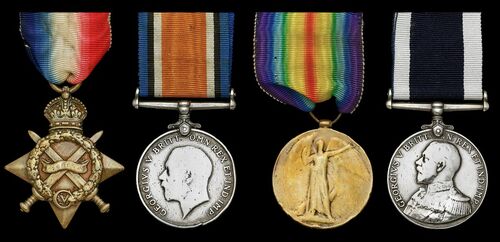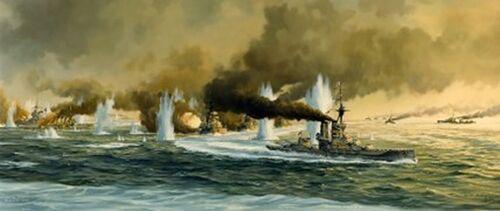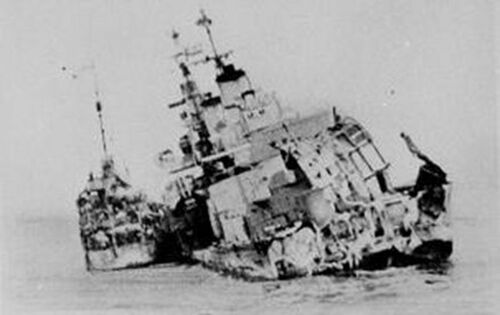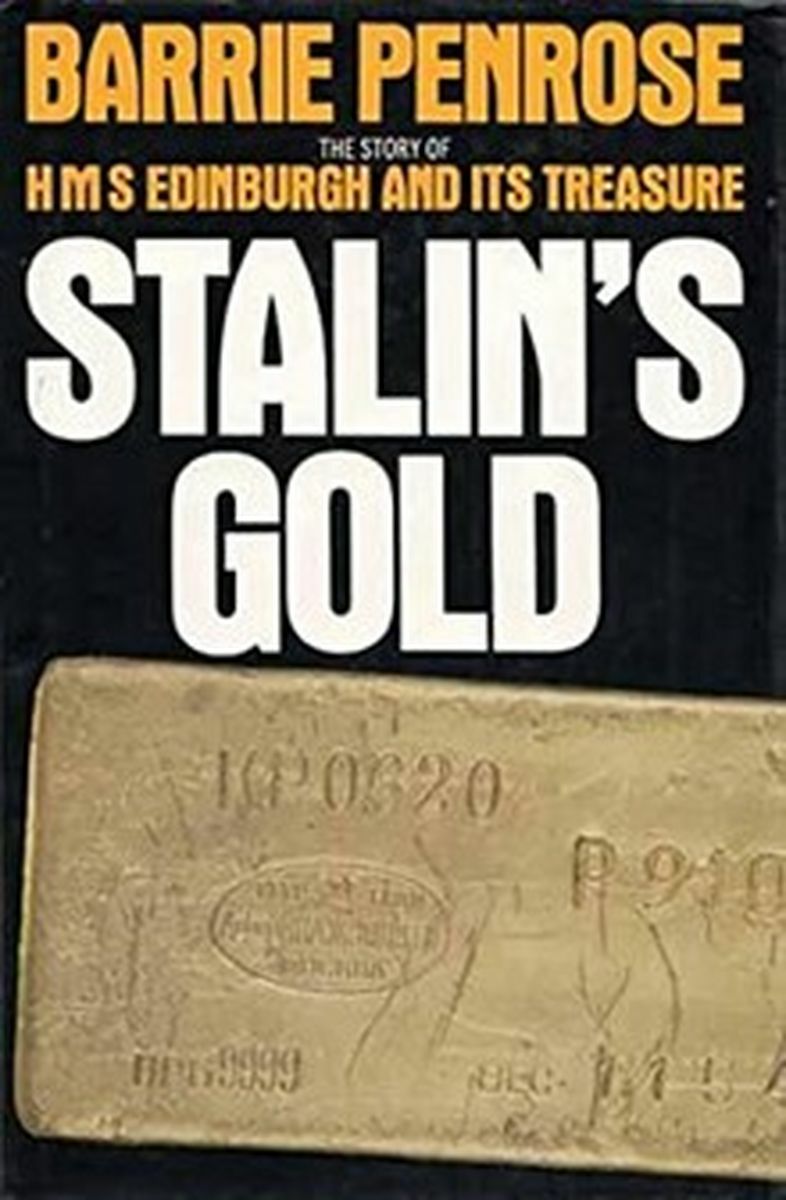Auction: 23113 - Orders, Decorations and Medals - e-Auction
Lot: 429
A notable campaign and long service group of four awarded to Stoker Petty Officer R. W. Rands, Royal Navy
In a remarkable seagoing career, he survived H.M.S. Marlborough's trials and tribulations at Jutland, telling enemy aircraft attacks on the minesweeper Hussar in 1940 and the loss of the cruiser H.M.S. Edinburgh on the Arctic run in May 1942
No wonder he polished his awards with pride …
1914-15 Star (K. 24349 R. W. Rands, Sto. 2, R.N.); British War and Victory Medals (K. 24349 R. W. Rands, Sto. 1, R.N.); Royal Navy L.S. & G.C., G.V.R. (K. 24349 R. W. Rands, Sto. 1, H.M.S. Durban), the second with re-riveted and slack suspension, edge bruising and heavily polished overall, thus poor (4)
Reginald Wilfred Rands was born at Axbridge, Somerset on 6 December 1897 and entered the Royal Navy as a Stoker 2nd Class in July 1915.
H.M.S. Marlborough - Jutland
He was subsequently present in the battleship H.M.S. Marlborough at the Battle of Jutland when she flew the flag of Vice-Admiral Sir Cecil Burney. Having scored several hits on the Wiesbaden, she was herself struck by a torpedo in her diesel engine room and seriously damaged.
The extent of that damage - and flooding - was apparent on her reaching the Humber after the battle, when her draught was 40 feet, ten feet more than full-load. And the hole in her side was found to be 70 feet long and 20 feet deep.
Rands finished the war with an appointment in the sloop Rosemary, was awarded his L.S. & G.C. Medal in March 1930 and was pensioned ashore as a Stoker Petty Officer in February 1937.
H.M.S. Hussar - much bombed
Recalled on the renewal of hostilities, Rands joined the Hussar, part of the 6th Mine Sweeping Flotilla in April 1940. Operating out of Dover and Harwich, Rands and his shipmates were to endure the regular attention of the Luftwaffe over the coming months.
One such visitation occurred off the Dutch coast on 15 May 1940, when a direct bomb hit caused Hussar substantial damage, killing three of her crew and wounding ten.
Remarkable footage of Hussar's disembarking her casualties at Harwich may be found on British Pathe:
https://www.britishpathe.com/asset/92671/
Hussar suffered further bomb damage off Orford Ness on 10 July 1940, thereby adding to an unhappy chapter in her seagoing career, a story recounted in detail on the halcyon-class website:
http://www.halcyon-class.co.uk/hussar/hussar_1940.htm
H.M.S. Edinburgh - loss on the Arctic run
Coming ashore in late July 1940, Rands joined the cruiser Edinburgh in October of the same year, and he was subsequently present at her loss on the Arctic run in May 1942.
In the interim, in addition to assisting at the Lofoten raid of March 1941, Rands and his shipmates served on the Malta run, including participation in Operations "Substance" and "Halberd".
From late 1941 Edinburgh served in the Icelandic Patrol and on the Arctic run and it was in this capacity - during the course of QP-11 in April-May 1942 - that she met her end, but not before miraculously surviving a double torpedo strike from the U-456; one of the torpedoes blew her stern off, wrapping her quarterdeck around X and Y turrets.
Edinburgh was taken in tow and, as the day wore on, many acts of heroism and tragedy occurred in and around the explosion areas. Men trapped in small compartments were pulled to safety in the nick of time as oil threatened to engulf them. Men were caught in the blast of burst steam pipes in darkness until the flesh peeled from their bodies. Men were trapped alive in unreachable compartments, a voice tube the only link with the upper deck, as officers tried to reassure them that they would soon be freed, knowing full well survival time was running out.
And they had still 200 miles to cover to reach Murmansk which, at a towing speed of 2 knots, would take another four days and nights.
It was not to be. On 2 May, off Bear Island in the Barents Sea, in the company of her consorts Foresight and Forester, she was attacked by three enemy destroyers. In the ensuing action Edinburgh severely damaged the Hermann Schoemann, causing her to be scuttled, but was herself torpedoed, suffering fatal damage.
Unable to steer and with serious flooding, Edinburgh was abandoned and, at length, was sunk by the destroyer Foresight. Her survivors - including Rands - were taken off by Foresight: two officers and 56 ratings were lost.
Of Rands' subsequent wartime appointments, little is known, and he was released 'Class A' in October 1945. He died at Weston-Super-Mare in August 1961.
Postscript: Stalin's Gold
Less well-known, owing to wartime secrecy, was the fact Edinburgh had embarked 465 gold ingots, payment for supplies delivered to the Soviet Union. Given their value - around £5 million at the time - the ingots and Edinburgh's wreck very much remained on Admiralty charts but, owing to the fact she lay some 800 feet down in the Barents Sea, early salvage attempts ended in failure.
However, all that changed in the autumn of 1981 when, amidst international publicity, Keith Jessop, an expert deep-sea diver and treasure hunter, led a successful salvage operation, raising 431 of the gold ingots, with by then an estimated value of £45 million.
Against larger competitors, he had won the contract on the basis he would not disturb the designated war grave: rather than deploy explosives and crude mechanical grabs, he used saturation divers.
Subject to 20% VAT on Buyer’s Premium. For more information please view Terms and Conditions for Buyers.
Sold for
£110
Starting price
£60











